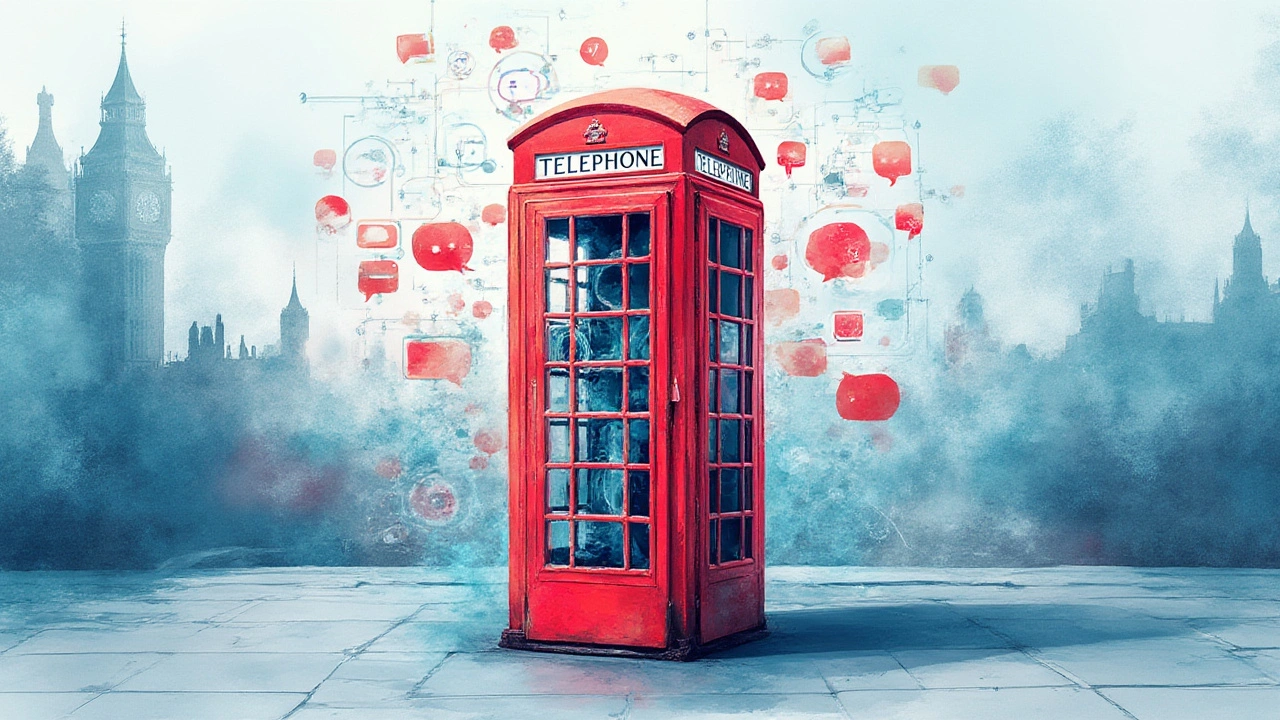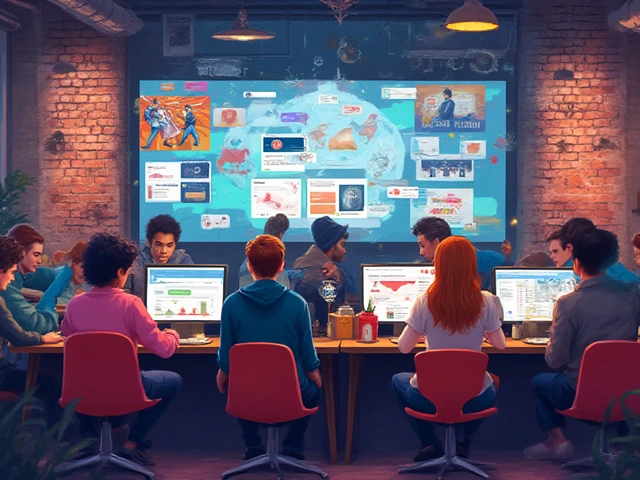Scroll through Instagram or X (that’s old Twitter) and you’ll find something odd. Brands aren’t just selling, they’re chatting. It no longer feels like a one-way street. Sometimes, you sense a quick wit, a touch of humor, or even a meme war breaking out, all in real time. That’s not a coincidence. It’s AI—specifically, ChatGPT—working behind the scenes. As businesses catch on, digital marketing turns into a conversation, not a broadcast. This phenomenon isn’t just hype—it's transforming how brands and customers connect.
What is ChatGPT and Why is It Showing Up in Your Feed?
ChatGPT isn’t just a chatbot you use for homework or code. It’s a language model that devours text, learns patterns, and spits out human-sounding replies. Now, marketers are putting it to work on social media platforms—from Facebook to TikTok. The result? Brand accounts giving instant replies, tailoring responses, and even hopping on trends so fast it makes your head spin.
Unlike old-school social bots, which sound robotic or copy-paste, ChatGPT adapts. It can recognize the tone of a comment (that’s sentiment analysis) and reply with the right balance of humor, empathy, or info. In late 2024, a research note from Gartner estimated that over 30% of brand-user social interactions now show signs of AI involvement, most often powered by a GPT-like model. Social media teams love it because they can plug it into their publishing tools. Brands like Duolingo, Ryanair, and Wendy’s have publicly admitted to leaning on AI for everything from clapbacks to casual customer banter.
The magic is in consistency and speed. ChatGPT can handle every timezone, reply at midnight, and scale from dozens to thousands of conversations without breaking a sweat. The account manager for Glossier once joked on a podcast, "Some days it feels like the AI is more on top of the queue than I am." Real customers have tested it: type in complaints or praise at different hours, and you'll experience instant replies that feel surprisingly tailored.
How ChatGPT Transforms Content Creation for Brands
Anyone who runs a business account knows the content calendar struggle. You have to be witty on Tuesday, insightful on Thursday, and meme-ready by Friday. The problem? Most teams just don’t have the hours—or creative reserve—to keep it up.
ChatGPT, when trained with your brand’s voice, spits out endless post ideas, tweaks copy on demand, and even personalizes content for different cohorts. A popular Sydney café, BrewHaHa, started using AI to generate captions and weekly specials. Their engagement jumped 17% within three months, mostly thanks to more regular posts and fresher hashtags. But it’s not just about quantity; quality matters most.
What’s wild is how AI keeps your feed on-trend. It doesn’t just monitor what’s viral; it can remix memes with your brand flavor in seconds. TikTok creators are collaborating with brands using AI to spin user-generated content quicker than ever before. Last Christmas, a travel agency in Perth used ChatGPT for quick video scripts riffing on trending sounds, then sent them to local creators—cutting editing time by a third and doubling their views.
The downside? If everyone uses the same prompts, feeds could start feeling samey. That’s why smart brands teach ChatGPT to understand slang, local humor, and even inside jokes. Want to sound like a Gold Coast surf shop? Train it on your DMs and influencer partnerships, and you’ll get copy that feels like home.

Boosting Engagement With Personalization—Without the Creep Factor
You know that weird feeling when a brand replies with your first name and a joke about your recent purchase? That level of personalization can backfire if it comes off as stalker-y. But get it right, and you’ve got loyalty for life.
With ChatGPT, brands are finding new ways to walk the line. Instead of creepy, they go for clever: referencing your favourite sports team if you chatted about it, or following up on a complaint with a discount code and a human touch. A 2025 Sprout Social study showed that 62% of Gen Z users have had at least one memorable conversation with an AI account—and were happier for it, as long as it felt real.
Fast-food brands are notorious for jumping on viral moments (“Is it cake or is it burger?”) using AI-generated memes and quizzes. For more serious brands, like online banks, ChatGPT helps them script responses that sound reassuring, not robotic, when customers post concerns. If you DM a fintech in Australia these days, chances are the first reply is crafted by AI—yet feels like a friendly local.
Here’s where the tech shines: multi-language and accessibility support. ChatGPT can translate customer queries and replies into dozens of languages instantly. Brisbane-based Eventura used AI translation to handle inquiries during a multicultural festival, bumping up ticket sales from overseas visitors. They included a chatbot with basic Auslan (Australian sign language) friendly prompts, making their socials more inclusive than ever before.
ChatGPT in Social Media Campaigns: Tips and Real-World Wins
Not every campaign needs viral energy—but every campaign benefits from smart automation. ChatGPT powers contests, comments on trending hashtags, and helps brands jump in fast when something blows up unexpectedly. The trick? Use it for the tasks humans hate: those repetitive, boring questions and comment floods.
Here are a few concrete tips on making AI carry the load, but not the personality:
- Start small: Don’t fire ChatGPT at every post. Begin with FAQs, replies to compliments/complaints, and basic campaign copy. Tune from there.
- Train your model: If you want ChatGPT to speak your language (‘Cheers, mate’ goes a lot farther than ‘Thank you, user’ in Australia), feed it old posts, replies, branded hashtags, and even customer reviews.
- Monitor for mistakes: No AI is flawless. Assign someone to review its replies—especially in the early days. Prompt it to apologize fast if it screws up.
- Blend with human touch: Use AI for the heavy lifting and let real staff handle tricky or ultra-personal responses. Customers spot the difference, and it’s actually reassuring to see both in play.
- Analyze, rinse, repeat: Most publishing tools track metrics for AI-powered posts versus human ones. Test what works. Sometimes, ChatGPT blows up engagement; sometimes, it falls flat. Tweak your prompts and retrain.
If you want hard proof, check out this quick data snapshot:
| Brand | Platform | AI Usage Start Date | Engagement Change |
|---|---|---|---|
| Lush Cosmetics (AU) | Nov 2024 | +21% (comments, shares) | |
| Lime Scooters | X, Facebook | Jan 2025 | +12% (response speed, DMs) |
| Uni Super | Sept 2024 | +8% (direct inquiries resolved) | |
| MooGoo Skincare | Instagram, TikTok | Mar 2025 | +24% (user-generated content) |
Another win: campaign A/B testing. With ChatGPT, you can spin 20 versions of an ad or post in minutes, then push them live to different segments. Brisbane yoga studio OmKind used AI for a Mother’s Day series, testing sentimental, funny, and instructional posts. The funny ones massively outperformed the rest—and the AI learned to prioritize that tone next time. Every campaign makes you smarter if you let the model adapt.

Privacy, Ethics, and the Future of AI in Social Media Marketing
Let’s address the elephant in the feed. As AI moves into DMs and comment threads, people worry about privacy. Who’s listening? Who’s learning? Major platforms from Meta to LinkedIn have rolled out new guidelines, flagging when posts or replies are written with AI help. In Australia, the ACCC recently reminded brands that misleading consumers—even by omission—can get you a fine. Transparency is currency; savvy brands now openly say if a bot powers their chat.
But there’s an upside. Nobody wants spammy, tone-deaf replies. When set up right, ChatGPT respects data boundaries, anonymizes details, and keeps customer info safe—if businesses actually configure it properly. No shortcuts here. That means regularly training, auditing, and even retiring chatbot logs where needed. Sloppy brands who skip these steps risk losing trust overnight.
Looking ahead, expect ChatGPT to get even better at speaking “Gen Z” or “Boomer” or even “Tradie from Brisbane.” Personalization will get sharper, but the savviest marketers will use AI as their wingman—not a solo act. The hottest job in social may soon be prompt engineering: teaching AI to write like a person, not a press release. Already, agencies like Surry Social and Magnetize in Sydney advertise “AI Copy Chief” services to help brands tune their digital tone.
If all this sounds like digital marketing is losing its human touch, don’t worry. The secret sauce is when AI supports, not replaces, real people. It’s not about perfect quotes or witty GIFs; it’s about being present and responsive, wherever and whenever customers show up. The biggest brands in 2025 aren’t drowning in DMs—they’re thriving on the connection that only smart use of ChatGPT can deliver.




Write a comment